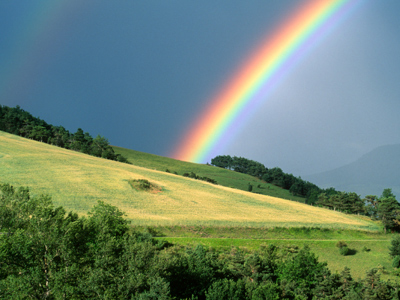
Colours are caused by light having different frequencies and wavelengths.
Light 02
This is an enjoyable way to test your knowledge about lenses. How does a telescope work?
Between the ages of 11 and 14 our quizzes are invaluable.
Scroll down to play the quiz
1 .
Why does grass look green in daylight?
It absorbs green and yellow light
It absorbs green light
It reflects green and yellow light
It reflects green light
In 1867 John Tyndall discovered why the sky is blue. Particles in the air scatter blue light more than red
2 .
When light travels from air to glass at any angle other than ninety degrees, which of the following is true?
It bends away from the normal
It bends towards the normal
The direction will not change
The speed is unchanged
The normal is a line drawn on a ray diagram to help to work out what will happen to a ray of light
3 .
In a solar eclipse, which of the following is true?
The Earth is between the Sun and the Moon
The Moon and the Earth are at right angles to each other
The Moon is between the Sun and the Earth
The Sun is between the Moon and the Earth
In a lunar eclipse the Earth is between the Sun and the Moon
4 .
Light can be split into colours of the spectrum using a prism. What is this process called?
Deflection
Dispersion
Reflection
Refraction
Isaac Newton was the first person to investigate this
5 .
Light from the Sun is called:
Blue light
Red light
White light
Yellow light
It contains all of the colours of the rainbow
6 .
When light travels from air to glass it does which of the following?
It is all reflected
It slows down
It speeds up
It travels in the same direction
Some of it is reflected but most of it passes into the glass because glass is transparent
7 .
Which of the following statements about light travelling from air to water is true?
It is mainly deflected
It is mainly dispersed
It is mainly reflected
It is mainly refracted
A little of the light is reflected, but if the light enters the water at exactly a right angle, it will continue on in the same direction as it was travelling in air
8 .
A red filter will only:
Stop blue light
Stop green and yellow light
Stop red light
Transmit red light
It absorbs all of the other colours of light
9 .
Colours are caused by light having different:
Frequencies and speed
Frequencies and wavelengths
Speeds
Wavelengths and speed
Red light has the longest wavelength and lowest frequency
10 .
The three primary light colours are:
Blue, green and yellow
Red, blue and green
Red, blue and yellow
Red, green and yellow
They are different from the primary colours of art
**Unlimited Quizzes Await You! 🚀**
Hey there, quiz champ! 🌟 You've already tackled today's free questions.
Ready for more?
Ready for more?
🔓 Unlock UNLIMITED Quizzes and challenge yourself every day. But that's
not all...
not all...
🔥 As a Subscriber you can join our thrilling "Daily Streak" against other
quizzers. Try to win a coveted spot on our Hall of Fame Page.
quizzers. Try to win a coveted spot on our Hall of Fame Page.
Don't miss out! Join us now and keep the fun rolling. 🎉
**Unlimited Quizzes Await You! 🚀**
Hey there, quiz champ! 🌟 You've already tackled today's free questions. Ready for more?
🔓 Unlock UNLIMITED Quizzes and challenge yourself every day. But that's not all...
🔥 As a Subscriber you can join our thrilling "Daily Streak" against other quizzers. Try to win a coveted spot on our Hall of Fame Page.
Don't miss out! Join us now and keep the fun rolling. 🎉







